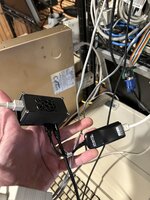I loaded up the 400k AppleShare Workstation 1.1 for Mac 512k image in minivmac. Other than having to close and reopen Chooser to list zones on a cold boot, I am having no issues connecting to my netatalk box and running applications directly off of the server. Connection is behaving, no timeouts or locking up. Granted, it is emulating a Mac Plus with Plus ROMs, not a 512k, but it shouldn't matter too much for AppleTalk. I'm pointing towards the issues with the Mac 512k being cabling.
Checking packets with "Watcher", I can confirm that RTMP broadcasts are short DDP packets now. NBPLkup packets are also short DDP packets, which may pose an issue for ImageWriters.

